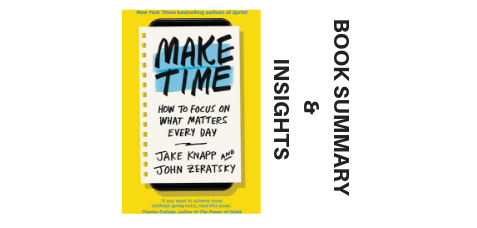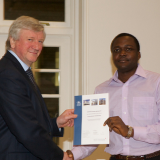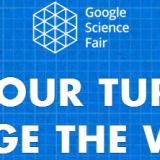Make Time (2018) Book Summary & Insights
Book Title: Make Time
Subtitle: How to Focus on What Matters Everyday
Publication Date: 2018
Author Names: John Knapp and John Zeratsky
About The Authors
John Knapp and John Zeratsky are technology geeks who worked several years at Alphabet Inc’s Google and YouTube.
From being on busy teams developing some of earth’s most immersive technological products, they have morphed into best-selling authors.
Apart from writing books, John Zeratsky sails far and wide.
Book Summary
You are busy all day. All of your days are busy. Your phone buzzes every time. You have one million new emails. By evening, you are tired. You binge on Netflix. You reflect on your day. You can’t point at one accomplishment in the day.
Welcome to our world of busy bandwagons and infinity pools. The first keeps you in one activity to the next, the second keeps you distracted. None makes you productive.
“Make Time: How to Focus on What Matters Everyday” by John Knapp and John Zeratsky is about creating time in your “busy” day amidst its several “distractions” for those projects (or tasks) that count with you.
Who Is This Book For?
This book is for all time docks and time dock “wannabes”, the productivity adherents looking for the time-tested formula for achieving life’s varied goals.
Buy Book: Support The Book Authors And Our Work
Great books should be read, studied, and reviewed frequently, so reading the actual book may provide more value to you than the book insights on this page. Besides, this would support the work of the book authors and what we do on LarnEdu. What could be better?
Important Notes
(Don’t worry about adding anything here for now)
We get a small compensation from Amazon when you visit your nearest/local Amazon site via our affiliate link to purchase an item within 24 hours or if you add it to your cart and checkout within 90 days. This is no additional cost to you and supports our work.
The information on this page is meant to supplement the actual book(it is not a book review but distils the key insights or ideas from the book in under 5000 words). The content creator or LarnEdu does not necessarily support the views, thoughts, and opinions expressed in the text/book. Reasonable skepticism should be applied with any views, thoughts or opinions expressed/shared by the book author or content creator.
Reading the contents of this page does not guarantee specific results. The best lessons are achieved from taking consistent action in the real world rather than being addicted to the illusion of progress by getting stuck on reading an infinite amount of books or book summaries and insights. LarnEdu and the content creator accepts no responsibility or liability for the accuracy of the information on this page or how it is used.
Book Insights

Introduction
There’s a good chance you spend the most important moments of your life living by life’s defaults. So you create no meaningful memories, and your life passes by in a forgettable blur.
You can take your life back by applying the principles outlined in “Make Time: How to Focus on What Matters Everyday”.
Focusing On In-Between Activities, In The Space Between Goals And Tasks Is The Key To Slowing Life Down And Deriving Satisfaction From It
You fill up your days with moments and the moments make up your memory,
not the days. You create those memories when you spend your days doing the things
that matter.
You can adhere to one of several suggestions for setting long-term goals and
working towards them by getting tasks done daily, but it will end up making you
more frazzled and more busy; and time will slide by you in a forgettable blur.
You need to slow your days down and experience its moments, by focusing on
“something” in-between your daily to-do list which you tick off with regularity
and your long-term goals, a chunk of time in the present; an activity to plan
for, look forward to and appreciate when completed. That “something” is a
“highlight”, a focal point of your day. It is the key to bringing satisfaction
to your daily life.
Your day’s highlight is its bright spot, the singular accomplishment for that
day you intend to savour. It might not be the only thing you intend to do in
the day, but it gives you an impetus to be proactive with your time. You get to
focus on achieving your priorities, even if every item on your daily to-do list
doesn’t get checked off.
Your day’s highlight creates an alternate path to the endless activity of the
busy bandwagon and the distractions infinity pools you can thread. You become
intentional and focused in spending your time. You create your reality.
Here’s three ways to pick your day’s highlight:
- What’s urgent today?
These are tasks that are time-sensitive, important and do not take a lot of time to accomplish. They live in your to-do list, email or calendar.
- What will bring you
the most satisfaction today?
These are tasks that are not urgent, but important. You want to get at them because doing them will give you a sense of accomplishment. There’s a tendency you procrastinate on these kinds of tasks as there are no deadlines attached to them. Highlighting one of them will help you break that cycle of procrastination.
- What will bring you
the most joy as you reflect on your day?
These are tasks you do just for the joy you derive when you accomplish them. It’s not every day or every hour you orchestrate for maximum efficiency. It’s okay to “let down” sometimes and do “non-productive” things you will enjoy.
Note the following about highlights:
- Highlights keep you intentional about your time. They make focusing on your priorities the default, so you can spend time and energy on what matters, and not reacting to the distractions and demands of modern life.
- Always go with your instinct in choosing a specific highlight for your day – urgent, satisfying or joyful.
- Choose a highlight you can accomplish in a sixty-to-ninety minute timeframe.
Use A Tactic That Will Help You Choose A Highlight And Make Time For It In Your Day.
You can deploy one or more tactics to help you choose your day’s
highlight. You can use some from one day to the next, others only occasionally.
They help you turn your actions into intentions.
Some tactics are:
- Writing highlights:
Write your highlight down on paper. You can also use an app or your calendar. Choose a time in which you do this daily. It could be in the evening prior to the day or the morning of the day.
- Repeat highlights:
You could repeat a highlight from one day to the next, if you didn’t get to or finish your highlight for a day or if it is part of a bigger project. Other reasons for repeating a highlight are to build (positive) momentum, create a habit and to keep a flow rolling.
- Use lists:
Create a list of all of your life’s competing highlights and rank them in the order in which they are important to you. That done, you can choose a daily highlight at the top (or near the top) of the list.
- Batch non-highlight tasks:
Focusing can be tough when you have several non-highlight tasks undone. You could batch these non-highlight tasks together and execute them in a single sprint highlight session. The beauty of this tactic is that it keeps several days free for you to work on your highlight tasks.
- Use to-do lists:
You could use to-do lists, but with
caution. The traditional to-do list places a priority on what others want you
to accomplish on their behalf, plus it is easy to mix up very important tasks
with the not-so-important ones; thus setting you up to take the path of least
resistance by doing the easy but unimportant tasks first and procrastinating on
the harder but more important ones.
That notwithstanding, to-do lists capture everything in your head into one
visible place so you can organize around them. There are two variations of the
traditional to-do list you can make use of – the “might do” list or the
“burner” list.
- Sprint:
Keep up at a highlight task (or project) for several consecutive days, rather than spreading it over smaller hours spanning weeks and months. You will work well, progress faster and accomplish much more.
- Schedule highlights:
Work out how much time you would need to begin and end your highlight. Determine when you want to start it. Then block out time for it by putting it on the one calendar you use to organize your life. Once you do that, that block of time is taken. You cannot schedule any other activity in it. This way, you it leaves you no choice but to schedule non-highlight activities around your highlights (life’s priorities). Do this on a regular and you will see your life’s priorities take shape on your calendar.
- Block out portions of your calendar:
Schedule contiguous time (several few hours) for “yourself” every day. This applies if you are a busy professional or a businessperson.
- Bulldoze your calendar.
Run a “bulldoze” through your calendar. Compress that one hour meeting into a ten-minute affair. Stack up meetings for a single day or two in the week so all other days are free for quality work.
- Flake.
If your calendar overwhelms you such that you have no time for your highlight, then flake. Look through your calendar. Chuck out that meet up you scheduled with a friend. Push back on the looming deadline of that project. By any means possible, make space in your calendar for your highlights.
- Say no.
Decide to always say no to low-priority obligations.
- Design your day.
Plan out your day, hour after hour; even minute after minute. Learn what works and what doesn’t, from one day to the next. Then adjust your plan.
You have more freedom when you structure your day. Your day is distraction-free.
- Become a morning or night person.
One or two hours of productive time lurks in the early and late hours of
the day. Whichever you are, a morning or night person, it requires planning to
take advantage of these hours.
If you are a morning person, “design” your nights for early sleep. Avoid
alcohol and chocolate. Turn the lights down in the apartment. Close the bedroom
curtains. Sleep early. Then wake up early the next morning, turn on the lights
and grab some coffee.
If you are a night owl, take your mind out of “busy mode” in the early evenings
by watching a part of a movie or reading a few pages of a book. Then transit to
“highlight mode” for an hour or two in the late evenings and then “wind down”
your brain after so your sleep doesn’t get messed up with.
is distraction-free.
- Quit work when you are done:
End your work day before you get exhausted. Set your finish line. It could be a time you set or a task you accomplished. As soon as you reach that milestone, stop work for the day.
Distraction Is A Full-Time Job
Choosing a highlight for your day is not enough. To make a success of
it, you need laser-mode focus. In this mode, all of your attention will be on
your highlight. It will be effortless tackling your highlight.
Distraction is humans’ default, and they abound in the form of infinity pools
around you: Twitter, Facebook, Instagram, Sports News; etcetera.
Here’s why you find it hard to resist the lure of infinity pools:
- Some of the most intelligent people on earth built them with passion.
- They get better from one year to the next.
- There is an intense ongoing competition to turn out better, faster and more immersive versions.
- They designed them to take advantage of the way your brain is wired.
You need controlled access to technology, so it doesn’t make up a constant source of distraction. Designers have spent decades creating infinity pool products and removing every barrier to the ease with which you consume them. The key to getting your focus back, in laser mode, from these distractions is by bringing back the barriers.
Your Willpower Is Not Enough To Protect Your Focus. You Need Barriers
Barriers (little inconveniences) make it hard for you to access infinity
pools and thus keep you in laser-mode focus.
Here are hacks you can use to focus:
- Use a distraction-free phone. Delete every app that is an infinity pool from your phone. That includes social media apps, emails, streaming services apps like Netflix and YouTube, and the web browser.
- Keep a blank home screen. Make the apps you keep on your phone unavailable through your home screen. That’s an intentional inconvenience you create that will make it hard for you to get at the infinity pools on your phone.
- Kill all app notifications.
- Go device-less once in a while, to make time for an “offline” highlight.
- Stop the morning check-ins. Don’t go for your devices first thing in the morning, on waking up, like an automaton. Let them be till much later in the morning.
- Have a routine for dealing with your Kryptonite app. Have a go-to routine for keeping your favourite (kryptonite) app at bay during your laser-mode periods.
- Time your access to the internet. The internet is the biggest of all infinity pools. Use apps or browsers to time and limit your sessions on it.
- Do away with your home internet service. Home internet services often come with infinite data. Do away with them. Access the internet on your home computer using your phone as a mobile hotspot. The logistics of doing that, plus the cost implications are enough barriers to keep you from bingeing on the internet.
- Watch out for time craters. Stay away from time craters. Time craters are little actions with big time consequences. For example, you stay awake two extra hours at night to watch your favourite programmes on Netflix but have to deal with a whole day of low energy and ineffectiveness in the next day.
- Have a set routine for dealing with email. Next to the Internet, the email is another big infinity pool. Once sucked into it, it creates a massive crater in your time and limits your productivity.
- Make TV watching a special event. Don’t binge on TV. Be intentional about the programmes you want to watch on it. Set your hours. Stick with the hours you have set. Save time and creative energy.
- Invent a deadline. A deadline forces you into laser-mode, so invent one. Call up a friend and set up a review meeting for the coming weekend for that script you are writing. You won’t want to show up at that meeting empty-handed.
- Explode your highlight. If your highlight is looking like a project, explode it! Divvy it up into sub-projects, tasks, and sub-tasks.
- Shut the door.If you want to do focused work on your highlight, shut the door behind you. Or you could don a pair of headphones. Everyone around you gets the signal you don’t want to be disturbed.
- Keep a “random question” list. Jot down on a piece of paper all random inquiries that cross your mind as you work in laser mode. Stay focused on your highlight. Deal with the inquiries later, after finishing work on the highlight.
- Breathe in, breathe out. If you lose focus, breathe in deeply and slowly through your nostrils, then breathe out through your mouth. It focuses you. Get back to work.
- Take time off. If you cannot focus even after trying several techniques, take time off to replenish.
Mirroring Your Lifestyle After That Of Your Prehistoric Forebears Is The Key To Having High Energy Levels
It’s not enough to pick a highlight and slip into laser mode focus and
expect to make a success of the highlight. You need energy in your body (your
brain, included) at high levels. Without this energy, you will succumb, in no time,
to physical and mental exhaustion.
Your body works like a rechargeable battery. When it’s filled with energy, it
becomes easy for you to slip into laser mode as you work on a highlight. When
it’s exhausted, an infinity pool easily takes away your attention from the
highlight you are working on.
Taking care of your body is the key to having high energy levels. The best way
to care for your body is to adopt a lifestyle that mirrors that of prehistoric
man!
Prehistoric man started out as a hunter-gatherer. Movement from one place to
the other was second nature to him. Often he covered great distances as he
hunted and gathered. He ate a variety of natural foods (vegetables, fruits,
nuts; etcetera) all day. He fasted, often waiting all day or longer for a
proper meal. Constant movement: walking, running, carrying, brief bursts of
intensive work; was a normal. He had time for leisure and his family. He worked
only thirty hours in the week. He lived and worked in close-knit communities.
He practiced face-to-face communication with his fellow humans (family and
friends), and he slept when the sun set and woke up when the sun rose.
Nature wired your body for a lifestyle of constant movement, varied but sparse
diets, ample quiet, plenty of face-to-face communication with family and
friends and restful sleep that follows the day’s natural rhythm.
However, today’s world defaults to a different lifestyle. For instance, sitting
for hours in the same spot takes the place of physical activity, while our
devices’ screens substitute for human face-to-face interaction. We now
manufacture our meals, not grow them. Sleep is an afterthought.
The modern world we live in evolved accidentally, aided along by rapid
technological change. Our bodies have not evolved by half as much since
prehistoric man walked the face of the earth, so we are out of sync with our
world. Beneath the posh veneer of fancy clothing and jewelry we put up, our
bodies are not so far out from being the prehistoric caveman our forebears
started out being.
The challenge, amid often contradictory advice from scientists, health gurus,
self-help authors and the likes; is how we can fuel our caveman bodies for
modern day work.
Energy Hacks For Your Body Exist In Your Everyday Activities
Again, the idea is to “go back in time” to “caveman” “energy-fueling”
tactics:
- Exercise every day. Moving your body is the best way to charge your battery. A twenty or thirty minute fast trot or jog through your neighborhood will do just fine. Do this every day.
- Walk. Walking is good for you. Nature designed your feet for walking.
It’s the world’s simplest and most convenient form of exercise. Walking helps
you lose weight, avoid heart disease, reduces the risk of cancer, lowers blood
pressure, strengthens your bones and improves your mood by releasing
endorphins.
Create “walking time” for yourself by substituting your usual mode of transport over short distances (and the long ones too, sometimes) with walking.
- Create inconveniences for yourself.
Is there any task you want to do the “easy way?” Go the “inconvenient” route. Cook instead of eating out, take the stairs instead of the lift, use a suitcase or a luggage box with no wheels. All of those extra physical activities your self-inflicted inconveniences are inducing will add to your energy level.
- Intensely exercise for a few minutes.
Do body weight exercises such as push-ups, pull-ups, squats or weightlifting exercises for seven to ten intense minutes. It’s energizing.
- Eat sparsely. Eat greens.
Eat good, grown foods; in moderate portions at a time. Eat lots of plants too.
- Stay hungry.
Fast intermittently. Food tastes better that way. Plus, you have good cardiovascular fitness, longevity, muscle development and reduced cancer risk. Fasting clears your mind and makes your brain sharp.
- Drink caffeine in controlled doses.
Be truly awake before you caffeinate. Have a first cup at 9:30am. Have another cup early afternoon just before your energy level dips. Then take a twenty-minute nap. You will wake up refreshed, recharged and roaring to go after the nap.
- Walk in the woods.
If you have a wooded area or a park around you, walk through it now and then. It is therapeutic, lowers stress, lowers your heart rate and blood pressure.
- Meditate.
The brain’s default mode is thinking, so it almost never rests. Meditating enables your brain to rest, breathe and reset. It reduces your stress level and increases your happiness. It recharges your brain and boosts focus.
- Take real breaks.
Do you need a break from your highlight? Take a real one. Go walk the streets. Do intensive exercise for ten minutes. Get face time. Don’t do Facebook or Twitter or Instagram, infinity pools are not real breaks.
- Spend time with your tribe.
Get “face time” with the people you love: family and friends. Have meaningful conversations with them. Do this frequently.
- Fake the sunset.
Turn the apartment lights down in the evenings. Put your devices on “night mode”. Keep your devices out of your bedroom. Close your bedroom curtains. Sleep in the dark.
- Nap.
Napping improves your alertness and cognitive performance in the afternoon. Do twenty to thirty-minute naps.
- Don’t fall behind on sleep.
Stick to a sleep routine. Every day. Don’t incur sleep debts. Don’t sleep in late on weekends.
Experiment, Then Use The Scientific Method To Journalise And Improve
The scientific method is a straightforward process. First, you observe
something interesting going on, then you hazard a guess why what you observed
happened the way you observed it. Next, you conduct experiments to see if your
guess was right. After that, you measure the results of your experiments to see
if you were right. Then you repeat the process, again and again.
You can use the scientific method to tailor the “Make Time” system to
you. The “Make Time” system is a product of the scientific method
applied to three hypotheses:
- The “Highlight” hypothesis:
Your day will be fulfilled if you start it with a single key intention you accomplish;
- The “Laser” hypothesis:
You can have your attention undiluted when you create barriers around busy bandwagons and infinity pools;
- The “Energize” hypothesis:
You can have enough mental and physical energy for your day if you live
a little more like prehistoric man.
The various tactics are experiments for testing these hypotheses.
So, from one day to the next, conduct these experiments on yourself. Then
collect and record your results (data). After this, review your data and
reflect:
- Did you make time out for your highlight today?
- Were you able to focus on your highlight?
- Was the day an energetic one for you?
Review the tactics you used during the day. How might you improve one or all of them? How can you get better results from your use of the tactics? Take notes in your journal. Then make plans for the tactics you will try out the next day.
Keep this cycle of experimenting, collecting and recording your data (journalising), reflecting, and planning going from one day to the next; you will experience immense improvements in your results.
Key Quotes
Here’re some key quotes from the book:
“We do not remember days, we remember moments.”
— Cesare Pavese
“I like University Professors, but you know…they look upon their body as transport for their heads, don’t they? It’s a way of getting their heads to meetings.”
— Sir Ken Robinson
“To pay attention, this is our endless and proper work.”
— Mary Oliver
Every time you check your email or another message service, you’re basically saying, “Does any random person need my time right now?”
― Jake Knapp
Conclusion
Life’s several defaults will hinder you from achieving your goals. They either keep you busy at nothing or keep you distracted, taking away precious time from you.
You can improve your life’s outcomes, your personal happiness and fulfillment by changing the several defaults life churns out your way.
Choose one highlight for your day. Keep at it energetically with 100% focus. Provide yourself with feedback by reflecting and journalising. Then get better.
You will go places!
Since You’re Here…
Great books should be read, studied, and reviewed frequently, so reading the actual book may provide more value to you than the book insights on this page. Besides, this would support the work of the book authors and what we do on LarnEdu.
You can also support the work we do at LarnEdu work by making a one/off or monthly donation(via PayPal) for as little as £0.99 or sharing this content.
Do you have any feedback or suggestions? Use the comment section below or send us a message.
Content created by: Deji















